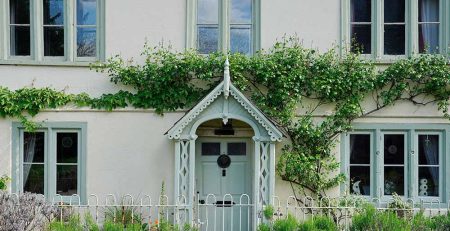Conservation Areas & Listed Buildings
The United Kingdom is home to several historic towns, villages, landmarks and monuments. From London to Manchester, these areas feature numerous historic sites and points of interest for locals and visitors alike. With conservation areas in the UK, places designated with landmark statuses are fully protected and preserved across the board. This includes national parks, along with historic buildings, government houses, museums, and especially natural wildlife habits and lands with mass vegetation.
 The first conservation areas were designated in 1967 across the UK. Today, there are over 8,000 landmarks that have achieved this status across England. These areas feature certain buildings, monuments, and sites that capture the history and character of the UK. The government deems these locales as landmarks, and revenues from taxes are primarily utilised to preserve and protect these areas for local and tourist purposes.
The first conservation areas were designated in 1967 across the UK. Today, there are over 8,000 landmarks that have achieved this status across England. These areas feature certain buildings, monuments, and sites that capture the history and character of the UK. The government deems these locales as landmarks, and revenues from taxes are primarily utilised to preserve and protect these areas for local and tourist purposes.Landmarks include historic towns, hamlets, and cities. They also feature historic mining and fishing villages, as well as 18th and 18th-century residential establishments and villages. Over the years, even certain bed and breakfast venues and hotels dating back centuries have achieved preservation status as well.
While conservatory units practically encompass historic sites and buildings, that is not always the case. In fact, many modern and contemporary estates with model houses qualify for conservation as well. This is because they add to the aesthetically pleasing visuals and natural beauty of the areas they reside in. The same can also be said for hospitals, mental health clinics, and private health facilities that seamlessly blend in with their specific environment.
The UK government has also mandated country houses, villages, hamlets, and even transportation links as landmarks. Homes set within national parks or in heavily forested areas have also qualified for conservation as well. With over 8,000 properties within these networks, how does a single property, mass property, national park, or even stretch of canal qualify for preservation?
The answer is quite simple for those that do not understand how this process works. For one, local councils and planning authorities determine which areas are designated for conservation. This, however, must be approved by the Secretary of State for National Heritage. Similarly, the London Borough Council or other governing agencies must correlate with their agreements as well.
You often hear people in the states wanting landmark status for certain buildings, areas, homes, commercial venues, and more. This is pretty much the same thing in the UK, however, there are many governing agencies involved in the process. This can include land and forestry preservation societies, along with arts, cultural heritage, recreational, and other departments. All groups must be willing to work together when it comes to conservation proposals to the main governing and approval agencies.
When it comes to certain properties, there are a number of departments involved in the preservation process. This includes window installers, painters, contractors, architects, designers, landscaping professionals, and so much more. Each contractor will be assigned a specific task or job, while entire firms may be given complete control over certain projects or aspects of it.
Other contractors utilised include satellite dish and solar panel installers, along with conservatory and extension specialists. Those that specialise in Sheetrock, paving and building walls will certainly be brought in for entire remodels and renovations. All these services, however, will ultimately be mandated and overseen by local building and city councils. They will work according to the guidelines of the Heritage Department, which have the final say on all enhancements and property improvements.
Local councils also oversee the uprooting of trees. Many trees are pruned or removed due to new construction or preservation projects. However, it is up to the Council to determine which trees will go or remain on the respective property. The Tree Preservation Order also plays a pivotal role since the main idea of conservation is also preservation. This is truly an intricate and detailed process with plenty of overlapping and problems that can arise at any time.
With so many UK preservation areas, the number of tourists and guests has increased as well. In fact, this is one of the main reasons why the government wants to protect certain landmarks, homes, cottages, and natural habitats. It is not only a matter of protecting the environment but also the personality and presence of the UK as a whole.
If you are a contractor wishing to be a part of these projects, simply contact your local building councils. You can also contact the State Heritage Society to inquire about ongoing projects. Similarly, guest and visitors can also contact the Society to get more information on tours and sightseeing programs.


Leave a Reply